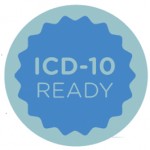It has been 11 months since the implementation of the ICD-10 diagnostic code set on Oct. 1, 2015, a change from the previous ICD-9. Most practices can probably attest that the transition came and went without the predicted doomsday outcome: Claims were still processed, the confused alphanumeric coding was applied, and patients were not deprived of their usual office visits. One of the many benefits promised with the transition to ICD-10 was the availability of more specific and robust data to improve care in the healthcare industry, but it is still too early to truly critique the impact of ICD-10 on the quality of care and cost. The most important factor currently for most physician practices is the end of the one-year safe harbor or grace period that allowed the billing of unspecified codes on Medicare claims, as well as the code freeze for new codes.
“The transition was seamless in my practice,” states Gerald Eisenberg, MD, a practicing physician in Chicago and the ACR’s Current Procedural Terminology (CPT) advisor to the American Medical Association. He continues to say that most providers can attest to a smooth conversion, but cautions that this doesn’t mean it will be smooth sailing all the way, and advises that practices should continue to learn the coding and billing guidelines of the code set. While there is evidence that most organizations have successfully transitioned to ICD-10 and are submitting claims productively, there is still more to learn and we will need to continue paying attention to accurately reporting diagnoses to the highest level of specificity.
Pre- & Post-Implementation Challenges
In the early stages of ICD-10 implementation, rheumatology practices experienced denials for coding rheumatoid arthritis as some payers were not accepting M05.79 or M06.09, which are valid codes. The ACR’s Insurance Subcommittee stepped in and worked with United Healthcare and Aetna to get these errors corrected. Although there has been success with making sure the correct codes are applied to payer policies and local/national coverage determination, there are still specific diagnosis codes that are not being covered, and the subcommittee is working with the payers to facilitate the corrections. Nonetheless, it is imperative for providers to make sure that the code assignments in their electronic health records are correct through detailed clinical documentation, because this should help the system drill down to the furthest level of specificity.
An increase of audits is on the horizon, but ICD-10 is still in the early stage of processing, and there is no clear indication on how ICD-10 coding is affecting healthcare fraud investigations. However, quality documentation is the strongest link to coding accuracy and the key to supporting medical necessity. The granularity in the code set can be obtained especially through laterality. For example, in coding osteoarthritis, it is important to list the detail of one or both knees that are being treated for that date of service. The use of M17.10, osteoarthritis of an unspecified knee, can trigger a denial or rejection. The better choices are:
- M17.0: Bilateral primary osteoarthritis of knee;
- M17.11: Unilateral primary osteoarthritis, right knee; or
- M17.12: Unilateral primary osteoarthritis, left knee.
The level of detail in the patient’s chart (i.e., left, right or both knees) will help the provider or coder apply the correct diagnosis code. This can have an impact on the practice’s revenue cycle, either positively or negatively.

